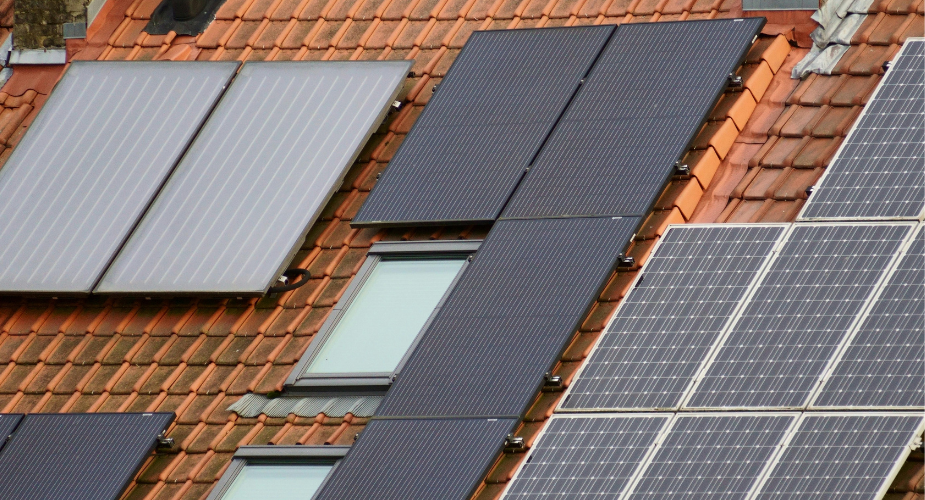As the demand for clean and reliable energy solutions continues to grow, solar battery storage has emerged as a game-changer for homes and businesses alike. By storing excess solar power generated during the day, these systems ensure a consistent energy supply. In this article, we’ll explore everything you need to know about solar battery storage—from understanding how it works, to calculating the right size for your needs, and analyzing the associated costs. Whether you're new to solar or ready to expand your current system, this guide will provide the insights you need to harness the full power of solar energy.

Solar Battery Storage System
- Understanding Solar Battery Storage
- Solar Battery Storage System Sizing
- Solar Battery Storage Cost Analysis
- Nature's Generator Solar Generator: Essential Home Backup
- Solar Battery Storage System FAQs
Understanding Solar Battery Storage
Solar battery storage refers to a system that stores energy generated by solar panels for later use. Instead of sending all excess solar power back to the grid, battery storage allows you to save it and use it when needed—such as during the night, on cloudy days, or during power outages. The stored energy can power your lights, appliances, and other essential devices, making your solar setup more efficient and reliable.
Benefits of Solar Battery Storage
Energy Independence
With a solar battery system, you rely less on the grid and gain greater control over your energy use. This is especially useful during blackouts or in areas with unreliable power supply. For off-grid living or homes in remote areas, solar battery storage is often essential.
Cost Savings
By storing and using your own solar energy, you can significantly reduce your electricity bills. You can avoid paying peak rates by using stored energy during expensive time-of-use periods, and in some cases, even earn credits by feeding excess power back to the grid.
Environmental Impact
Solar battery storage promotes a cleaner, greener future. By reducing dependence on fossil fuels and lowering carbon emissions, it supports global efforts to combat climate change. The more energy you store and use from your solar system, the smaller your carbon footprint.
Types of Solar Battery Storage Systems
Residential
Designed for households, residential solar batteries are typically smaller in size and capacity. They’re ideal for daily energy use and backup during outages. Popular among homeowners looking to save on bills and enhance their solar setups.
Commercial
Businesses use solar battery storage to manage high energy demands, lower operational costs, and improve energy resilience. These systems are scalable and can be tailored to meet specific commercial energy goals.
Industrial
Industrial-grade battery storage systems are built for large-scale operations. They support critical infrastructure, stabilize energy supply, and reduce demand charges. These systems often work alongside large solar farms or grid-connected systems to enhance performance and reliability.
Solar Battery Storage System Sizing
Choosing the right solar battery size is crucial for ensuring you have enough stored energy to meet your needs without overpaying for unused capacity. A properly sized system improves efficiency, lowers costs, and guarantees that your essential appliances have power when you need it most.
Assessing Energy Consumption
Evaluating Daily Energy Usage
The first step in sizing your solar battery is understanding your average daily electricity consumption. This information is usually available on your electricity bill, listed in kilowatt-hours (kWh). By knowing how much energy your household or business uses in a day, you can begin estimating how large your battery needs to be to cover a full cycle of use.
Considering Peak Demand Times
It's also important to identify when you use the most electricity. Peak demand periods—such as evenings when lights, appliances, and devices are all running—can influence how quickly your battery drains. Understanding these patterns helps ensure your battery system is capable of handling short bursts of high energy demand.
Determining Battery Capacity Requirements
Calculating Based on Energy Needs
Once you know your daily usage, you can start calculating how much storage you'll require. For example, if your home uses 10kWh per day and you want enough storage to last for one full day without solar input, you’ll need at least a 10kWh battery.
Accounting for Days of Autonomy and Depth of Discharge
Most battery systems don’t discharge 100% of their energy—this is known as depth of discharge (DoD). For example, if a battery has a usable DoD of 90%, you’ll need to factor in that extra capacity. Additionally, you may want autonomy for multiple days without sun. If you want two days of backup, and your daily use is 10kWh, you’ll need around 22kWh of battery capacity (to allow for DoD and inefficiencies).
Tools and Resources
Utilizing Solar Battery Calculators
Online tools and calculators can simplify the sizing process. These calculators often ask for your location, daily energy use, and solar system size to estimate your ideal battery capacity. They’re a great starting point, but results may vary depending on accuracy of input.
Consulting with Professionals for Accurate Sizing
While online tools are helpful, speaking with a solar energy professional is the most accurate way to determine the right battery size. They can assess your energy profile, solar production, and future needs to recommend a tailored solution that fits your goals and budget.
Solar Battery Storage Cost Analysis
Investing in solar battery storage offers long-term financial and environmental benefits, but it's essential to understand the costs involved before making a commitment. This section breaks down the key pricing factors, offers average cost estimates for U.S. homes, and explores how government incentives can significantly reduce your upfront investment.
Factors Influencing Cost
Battery Type and Capacity
The cost of a solar battery system depends heavily on the type of battery and its storage capacity. In U.S. households, lithium-ion batteries—like the Tesla Powerwall or LG Chem—are the most common due to their efficiency, long lifespan, and compact design. However, they also come with a higher price compared to traditional lead-acid batteries. The larger the battery’s capacity (measured in kilowatt-hours or kWh), the more you can store—and the more you’ll pay upfront.
Installation and Maintenance Expenses
Installation costs can vary based on your location, the complexity of your existing electrical system, and labour rates. Some homes may require upgrades to inverters, service panels, or battery enclosures, which can add to the overall cost. Fortunately, most modern solar batteries require minimal maintenance over their lifespan—though occasional system checks or firmware updates may be needed.
Average Cost Estimates
Price Ranges for Different System Sizes
As of 2025, residential solar battery systems in the U.S. generally cost:
-
5kWh battery: USD $5,000–$7,000 (installed)
-
10kWh battery: USD $10,000–$15,000 (installed)
-
15kWh battery: USD $15,000–$20,000+ (installed)
These prices can vary depending on the battery brand, installer, and whether the battery is part of a new solar system or added to an existing one.
Return on Investment Considerations
Though the initial investment can be significant, solar batteries can lead to substantial long-term savings—especially in areas with time-of-use electricity rates or frequent power outages. By storing solar energy for use during peak times or blackouts, homeowners can reduce grid reliance and lower utility bills. When paired with solar panels, the return on investment improves significantly over time.
Financial Incentives and Rebates
Government Programs
In the U.S., the Federal Investment Tax Credit (ITC) plays a major role in reducing the cost of solar battery storage. As of 2025, homeowners can claim 30% of the total system cost (including installation) as a tax credit—provided the battery is charged by solar energy.
State and Local Incentives
Many states offer additional rebates or incentive programs. For instance, California’s Self-Generation Incentive Program (SGIP) offers significant rebates for battery storage installations, with increased support for low-income households and those in wildfire-prone areas. Other states, such as Massachusetts, New York, and Maryland, provide their own financial incentives, tax exemptions, or performance-based rewards for energy storage.
Nature's Generator Solar Generator: Essential Home Backup
For homeowners seeking a reliable and scalable backup power solution, the Nature's Generator MyGrid 10K stands out as a robust solar generator system designed to deliver uninterrupted power during outages. This system combines renewable energy generation, storage, and smart management in a user-friendly setup that’s suitable for a wide range of home energy needs.
Key Features and Specifications
-
10,000W Power Output – Capable of powering essential household appliances and electronics, including refrigerators, medical devices, lighting, and communication equipment.
-
Expandable Battery Storage – Comes with high-capacity lithium batteries and supports modular expansion to increase storage as needed.
-
Solar and Wind Input Support – Charges via solar panels or optional wind turbines for versatile off-grid energy production.
-
Smart App Control – Allows users to monitor battery levels, power usage, and solar input from a smartphone.
-
Inverter and Transfer Switch Integration – Seamless connection to your home’s electrical panel for automatic or manual switching during outages.
Suitability for Home Backup Scenarios
The MyGrid 10K is especially well-suited for emergency backup in residential settings. Whether you’re dealing with planned outages, storms, or grid instability, this system can keep your essential appliances running. It’s also a great fit for off-grid cabins or homes looking to increase energy independence.
Advantages of Nature's Generator
Ease of Use
The plug-and-play design makes installation straightforward, even for users with limited technical experience. The system is designed to be intuitive, with color-coded ports and clear instructions that simplify setup and daily operation.
Scalability and Expandability
One of the standout features of the MyGrid 10K is its modularity. Users can start with a base unit and add extra batteries or solar panels over time, allowing the system to grow with changing household energy needs. This flexibility is ideal for families planning to gradually transition to full or partial off-grid living.
Cost-Effectiveness
Compared to custom-installed solar battery systems, Nature's Generator offers a more affordable turnkey solution. It eliminates many of the labor and permitting costs associated with traditional solar-plus-storage setups while still delivering meaningful backup capability and long-term savings. Its compatibility with solar tax credits may also help reduce upfront investment.
Solar Battery Storage System FAQs
How long do solar batteries typically last?
The lifespan of a solar battery varies depending on the type and usage, but most modern lithium-ion batteries last between 10 to 15 years. Lead-acid batteries usually have a shorter lifespan, typically around 5 to 7 years. Battery longevity also depends on factors like how often the battery is charged and discharged, operating temperatures, and maintenance practices.
What maintenance do solar batteries require?
Solar batteries generally require minimal maintenance. Lithium-ion batteries are mostly maintenance-free but should be monitored regularly to ensure optimal performance. It’s recommended to keep the battery clean, avoid extreme temperatures, and have periodic inspections by a professional. Lead-acid batteries may require occasional topping up with distilled water and checking for corrosion on terminals.
Can solar batteries be integrated with my existing solar panel system?
In most cases, yes. Many solar batteries on the market are designed to be compatible with existing solar panel installations. However, compatibility depends on your inverter type, system voltage, and battery technology. It’s advisable to consult with a solar professional to ensure your current system can seamlessly integrate a battery storage unit and to determine if any upgrades are necessary.
Conclusion
Solar battery storage is a smart investment for any home looking to maximise energy savings, improve reliability, and increase independence from the grid. By storing excess solar power for use during peak times or outages, these systems not only reduce energy bills but also contribute to a greener future. Whether you’re starting fresh or expanding an existing solar setup, understanding your energy needs and choosing the right storage solution—like the versatile Nature’s Generator MyGrid 10K—can make all the difference in unlocking the full benefits of solar energy.






 10,000W LIFEPO4
10,000W LIFEPO4









